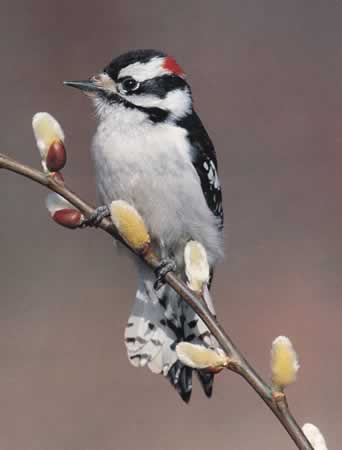|
|
Canku Ota |
|
|
(Many Paths) |
||
|
An Online Newsletter Celebrating Native America |
||
|
July 31, 2004 - Issue 118 |
||
|
|
||
|
Bishinik, The Little Chahta News Bird |
||
|
by Choctaw Legend |
||
|
credits: |
|
According to Choctaw
legend, when the "returning waters" (that is the Choctaw
term for the Great Flood) came, two birds, Bishinik (a small, speckled,
scissortail species of Woodpecker), and Folichik (the scissortail
fly catcher), were the only two birds to escape drowning by flying
as high as they could and perching upside-down upon the sky. As
it was, the waters came so high that the birds' tails hung down
where the dashing waters caused their tail feathers to separate,
thus making them split, or scissortail.
Bishinik would live around Choctaw homes and let them know whenever someone was approaching. The friendly little woodpecker was also believed to accompany hunting parties or war parties when they went into the field. Bishinik would warn the warriors of the approach of an enemy, or would indicate to them when game was near and in which direction they should travel to find this game. Should an enemy force approach an encampment of Choctaw Warriors during the hours of darkness, Bishinik would warn them by tapping out messages on trees about the camp. Bishinik is honored to this day, as the tribal newspaper bears his name! Print and Color
Your Own Downy Woodpecker Maze |
|
|

 Because
of their bravery, the two birds were blessed by creator, and because
Bishinik was grateful for this blessing, Creator decreed that Bishinik
would always be a special friend to his people, the Choctaw. To
the Choctaw, Bishinik was the friendliest of birds, was accorded
special treatment, and became known as "the little Chahta news
bird".
Because
of their bravery, the two birds were blessed by creator, and because
Bishinik was grateful for this blessing, Creator decreed that Bishinik
would always be a special friend to his people, the Choctaw. To
the Choctaw, Bishinik was the friendliest of birds, was accorded
special treatment, and became known as "the little Chahta news
bird". Cool
fact: Male and female Downy Woodpeckers use separate foraging strategies
during the winter. Males tend to feed in the tops of trees on branches
that are smaller in diameter, whereas females feed in midlevel and lower
sections of the tree on branches that are larger in diameter. Males
aggressively maintain this segregation by chasing away any bird that
attempts to feed near them.
Cool
fact: Male and female Downy Woodpeckers use separate foraging strategies
during the winter. Males tend to feed in the tops of trees on branches
that are smaller in diameter, whereas females feed in midlevel and lower
sections of the tree on branches that are larger in diameter. Males
aggressively maintain this segregation by chasing away any bird that
attempts to feed near them.  The
Downy Woodpecker breeds over a widespread area encompassing most of North
America, except for the extreme Southwest and areas below treeline. Six
recognized races of Downy Woodpeckers exist.
The
Downy Woodpecker breeds over a widespread area encompassing most of North
America, except for the extreme Southwest and areas below treeline. Six
recognized races of Downy Woodpeckers exist. 